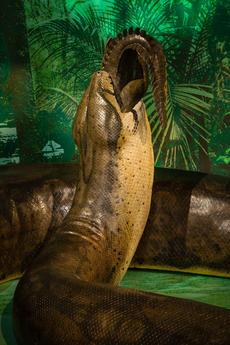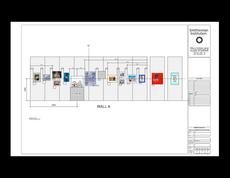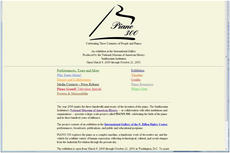 Even though I work at the Smithsonian Institution there are quite a few exhibitions throughout the museums and galleries that I don’t get around to visiting because there are not enough hours in the day. This includes the monster snake Titanoboa. Luckily my children did get to view it up close in all its frightening glory at the National Museum of Natural History last year. Nevertheless, I do get to work with the planning records of some of the Smithsonian exhibitions in my job. These records deal with the design, execution, and installation of exhibitions.
Even though I work at the Smithsonian Institution there are quite a few exhibitions throughout the museums and galleries that I don’t get around to visiting because there are not enough hours in the day. This includes the monster snake Titanoboa. Luckily my children did get to view it up close in all its frightening glory at the National Museum of Natural History last year. Nevertheless, I do get to work with the planning records of some of the Smithsonian exhibitions in my job. These records deal with the design, execution, and installation of exhibitions.

Digital files in these collections can include correspondence, memoranda, concepts, proposals, scripts, label texts, catalogs, promotional materials, clippings, installation photographs, floor plans, drawings, graphics, checklists, schedules, visitor comment books, notes, and other related materials. Going though these records gives me a real appreciation for all the work that goes into planning and opening an exhibition, which can take years and many phases. Multiple offices and contractors also can be part of the process.

Exhibition space has to be carefully laid out. The Office of Exhibit Central’s floor plans for the Smithsonian 2008 Artists at Work offer great details of where each object would go in the juried exhibition that featured 70 works created by Smithsonian staff, fellows, interns, and volunteers. This work was done using CAD (computer-assisted design) software.
Many exhibitions also have an online presence now either through websites or social media. Not only did the Piano 300 website serve as a companion piece for more than a decade to the Piano 300 exhibition that ran from 2000-2001, it also demonstrates how website design has changed since 2000. The website was recently removed but has been archived.
 Some exhibitions also travel to other institutions after being on view at the Smithsonian in coordination with the Smithsonian Institution Traveling Exhibition Service. American Sabor: Latinos in U.S. Popular Music was one of those, which is now on exhibit at the New York Public Library for the Performing Arts. Some of these records include educational materials for classroom use.
Some exhibitions also travel to other institutions after being on view at the Smithsonian in coordination with the Smithsonian Institution Traveling Exhibition Service. American Sabor: Latinos in U.S. Popular Music was one of those, which is now on exhibit at the New York Public Library for the Performing Arts. Some of these records include educational materials for classroom use.
The Smithsonian also maintains a wonderful database of past (starting from the 1980s), current, and upcoming exhibitions as well. For instance, American Art at the 1893 World's Fair was held at the National Portrait Museum in 1993 to mark the 100th anniversary of World's Columbian Exposition in Chicago. This database serves as another tool that notes the history of the various museums, galleries, and research centers at the Smithsonian and their role in telling many stories.
Exhibition records are a rich resource that can document how museum exhibitions have evolved over time or how a specific object was described and used within an exhibition. These records offer a deeper understanding of all the hard work that was needed to make an exhibition a reality.
Related Resources
- Inventing an Exhibition - Part 1 and Part 2, Bright Ideas blog, Lemelson Center
- American Sabor: Latinos in U.S. Popular Music, Smithsonian Institution Traveling Exhibition Service
Produced by the Smithsonian Institution Archives. For copyright questions, please see the Terms of Use.

Leave a Comment